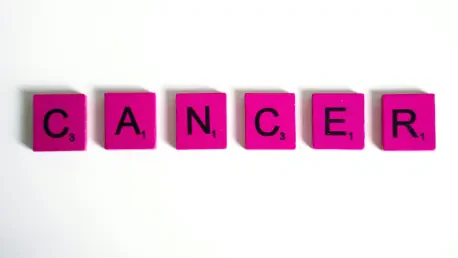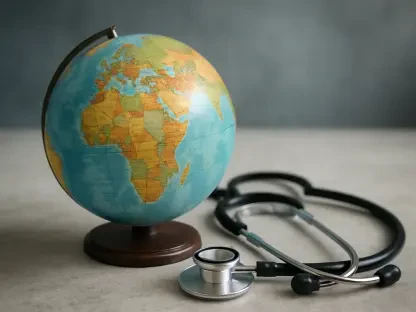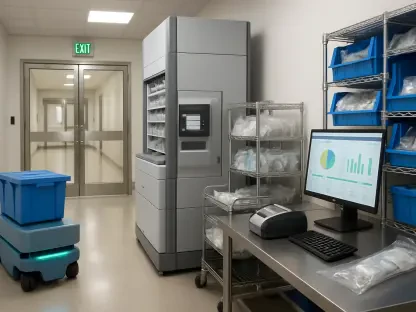Cancer stands as a formidable challenge to the health of children, adolescents, and young adults across the globe, claiming countless lives each year with a burden that varies dramatically by region and circumstance. A comprehensive study analyzing data from 77 countries over a span of three decades, from 1990 to 2021, offers a detailed look into the evolving landscape of cancer mortality among these younger populations. Utilizing sophisticated time-series analysis and predictive modeling, this research uncovers both encouraging progress and deeply entrenched challenges that continue to shape outcomes. While some areas of the world have witnessed significant reductions in death rates due to advanced medical interventions, others remain trapped in a cycle of limited resources and systemic barriers. This stark contrast raises critical questions about equity in global health and the steps needed to ensure that every young person, regardless of where they live, has a fighting chance against this devastating disease.
Unveiling Regional Inequities in Cancer Outcomes
Significant disparities in cancer mortality rates among youth highlight a troubling divide between high-income countries (HICs) and low- and middle-income countries (LMICs). In HICs, substantial advancements in healthcare infrastructure have driven down death rates over the past few decades. Access to early detection tools, such as advanced imaging, and cutting-edge treatments like precision medicine has transformed survival rates for many young patients. These nations often benefit from well-funded research and robust public health campaigns that promote awareness and timely intervention. The result is a measurable decline in mortality, offering a glimpse of what is possible with the right resources. However, this success story is not universal, as many regions struggle to replicate these gains due to fundamental differences in economic and systemic capacity, leaving millions of young lives at risk.
In stark contrast, LMICs face persistent challenges that hinder progress in reducing cancer mortality among children and young adults. Limited access to basic diagnostic tools often means that cases are identified at later, less treatable stages. Treatment options, when available, are frequently outdated or insufficient, with shortages of essential drugs and trained specialists exacerbating the problem. Beyond medical barriers, many families in these regions cannot afford the costs associated with care, leading to treatment abandonment. Infrastructure issues, such as unreliable electricity or transportation, further complicate access to hospitals or clinics. The outcome is a slower decline in death rates—or even increases in some areas—underscoring the urgent need for targeted global health strategies that prioritize resource allocation and systemic support to level the playing field.
Diverse Cancer Challenges Across Geographies
The spectrum of cancers affecting young populations varies widely by region, reflecting unique environmental and biological factors that demand tailored responses. Globally, leukemias and brain tumors rank as leading causes of death among children and young adults, often requiring complex and resource-intensive treatments. However, in certain parts of the world, particularly in LMICs, cancers associated with infectious agents like the Epstein-Barr virus or hepatitis viruses contribute significantly to mortality. These conditions are often preventable or manageable with vaccination programs and infection control measures, yet such interventions remain underutilized in resource-poor settings. This regional variation illustrates the complexity of the global cancer burden and the necessity for health policies that address specific local challenges rather than relying on broad, generalized approaches.
Beyond the types of cancer, geographic disparities also reveal differences in risk factors and healthcare responses that shape outcomes for young patients. In some regions, environmental exposures, such as pollutants or lack of clean water, may heighten cancer incidence, while cultural beliefs or stigma can delay diagnosis and treatment. Health systems in these areas often lack the capacity to implement widespread screening or to provide specialized oncology care, resulting in higher mortality rates. Addressing these issues requires a nuanced understanding of local contexts and the integration of oncology with broader public health initiatives. For instance, combining cancer prevention with efforts to control infectious diseases could yield significant improvements in survival rates. Such customized strategies are essential to ensure that interventions are both effective and sustainable in diverse settings around the world.
Age and Social Factors Shaping Mortality Trends
Cancer outcomes among youth are not only influenced by geography but also by age, with adolescents and young adults often facing distinct hurdles compared to younger children. Biological differences play a critical role, as cancers in older youth may exhibit more aggressive behaviors or respond less favorably to standard treatments designed for pediatric cases. Additionally, the transition to adolescence introduces unique psychological and developmental challenges that can impact care. For example, teenagers may be less likely to adhere to lengthy treatment protocols due to a desire for independence or lack of understanding about their condition. These factors contribute to a troubling pattern of stagnation or even worsening mortality rates in this age group, highlighting a gap in current oncology approaches that must be addressed with age-specific interventions.
Social and economic barriers further compound the challenges faced by young cancer patients, particularly in under-resourced regions. Poverty remains a significant driver of poor outcomes, as families struggle to afford medical care or travel to distant treatment centers. Inadequate health education also plays a role, with many communities lacking awareness about cancer symptoms or the importance of early intervention. Weak healthcare infrastructure, such as a shortage of trained oncologists or limited hospital beds, exacerbates these issues, often leading to delayed diagnoses and incomplete treatments. Tackling these social determinants of health is just as crucial as advancing medical technology. Without addressing the root causes of inequality—such as income disparity and access to education—efforts to reduce cancer mortality will fall short of reaching the most vulnerable populations.
Building a Future of Equitable Cancer Care
Predictive models from the extensive study of cancer mortality trends offer both a cautionary outlook and a pathway to improvement, emphasizing the urgency of global action. If current disparities persist without intervention, the gap between HICs and LMICs is likely to widen, with under-resourced regions bearing an increasingly heavy burden of preventable deaths. These models project that systemic barriers, if unaddressed, will continue to limit progress in reducing mortality rates among youth in vulnerable areas. However, they also demonstrate that strategic investments—such as improving access to diagnostics, expanding training for healthcare providers, and transferring technology—can significantly alter this trajectory. This duality of risk and opportunity serves as a powerful reminder that the future of cancer care depends on deliberate, coordinated efforts to prioritize equity.
International collaboration emerges as a vital component in the fight against cancer mortality among young populations, offering a mechanism to share knowledge and resources across borders. By fostering partnerships between nations, health organizations can pool data to better understand global trends and develop evidence-based solutions. Initiatives that align with frameworks like the Sustainable Development Goals provide a structured approach to reducing premature deaths from non-communicable diseases. For instance, joint efforts to build healthcare capacity in LMICs, through funding or training programs, can help close the gap in care quality. Ultimately, the path forward lies in a collective commitment to ensuring that every young person, no matter their location or circumstances, has access to the tools and support needed to survive cancer. This vision of equity, though ambitious, remains within reach through sustained global solidarity.









